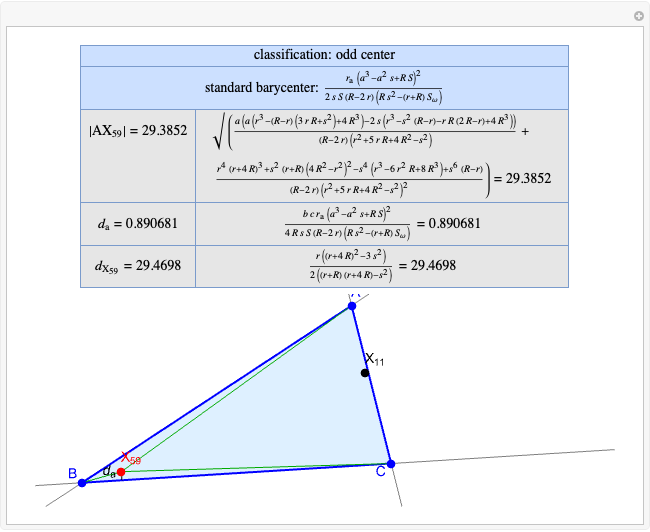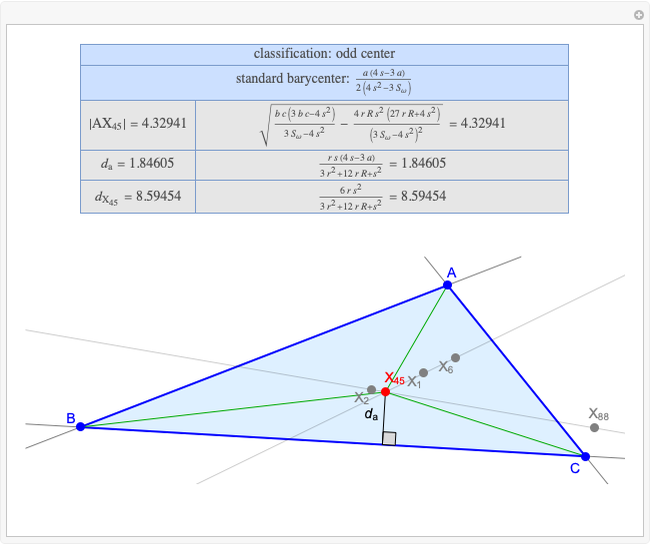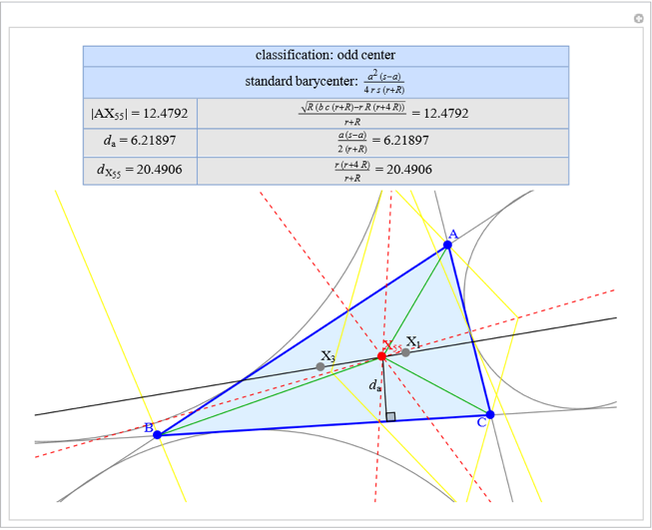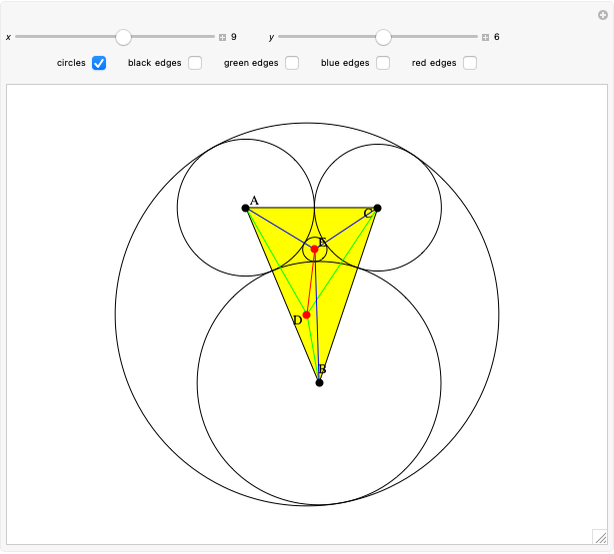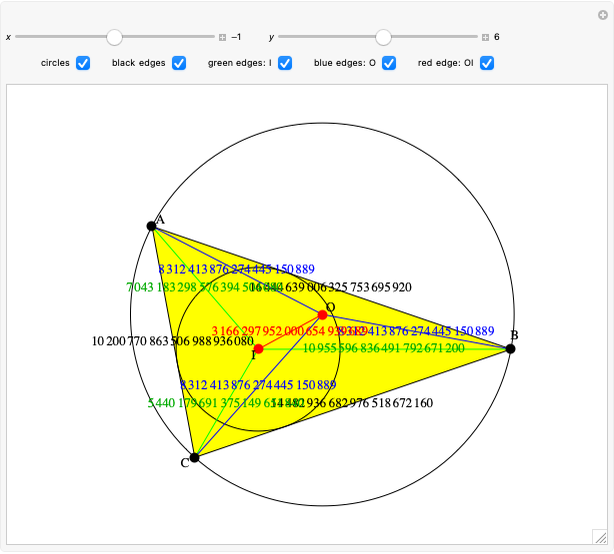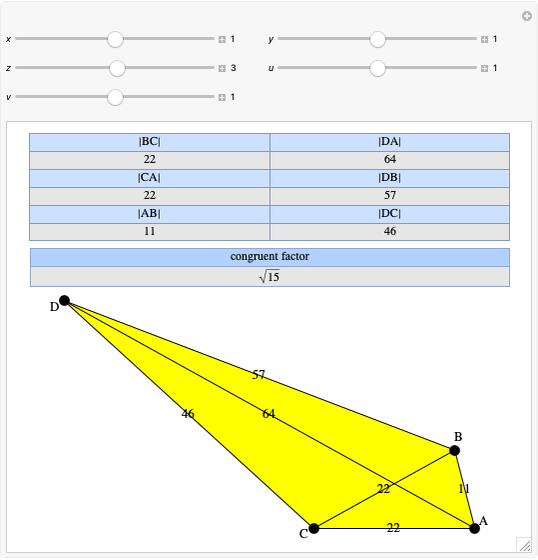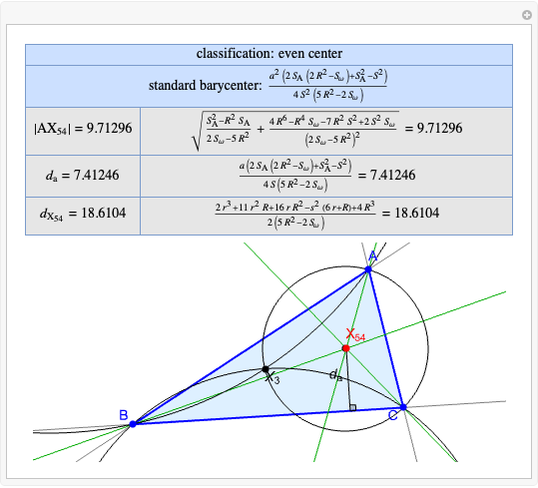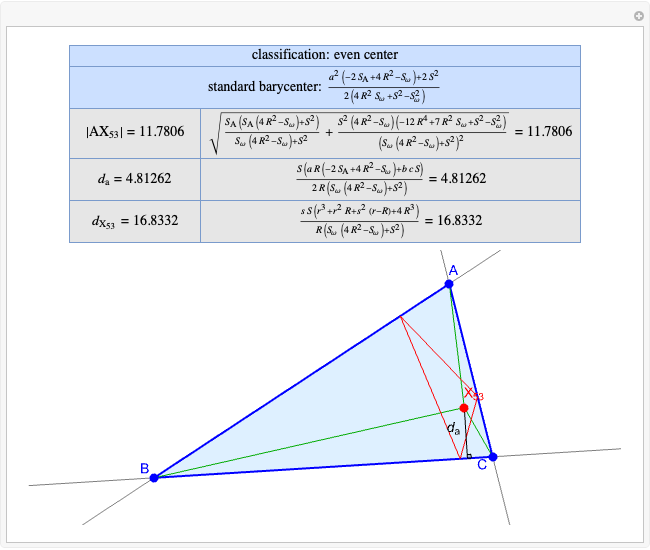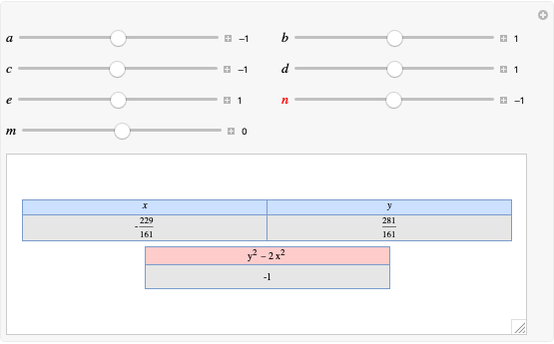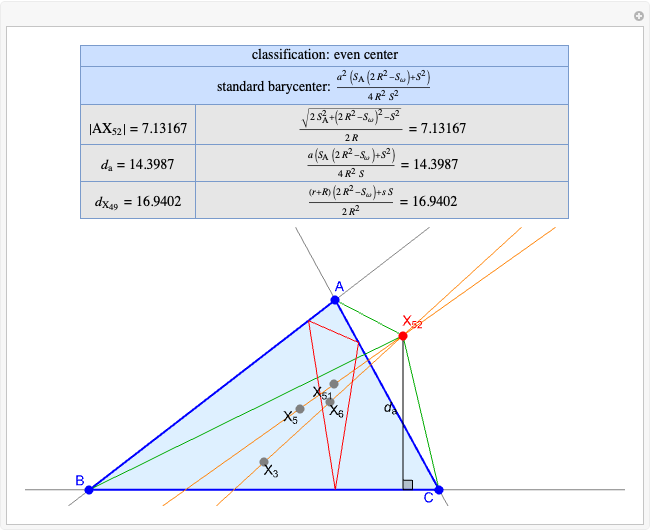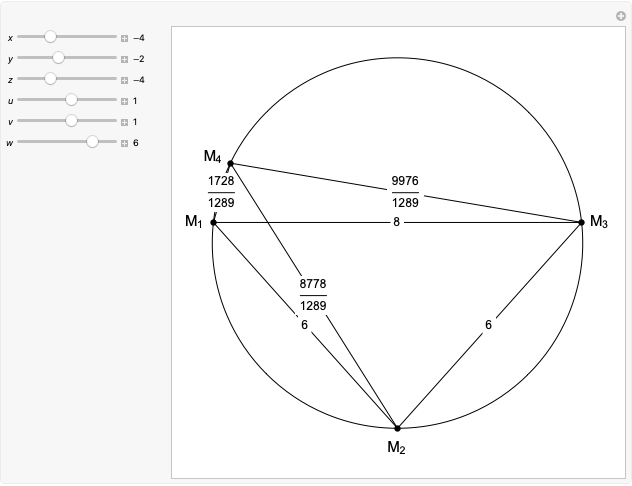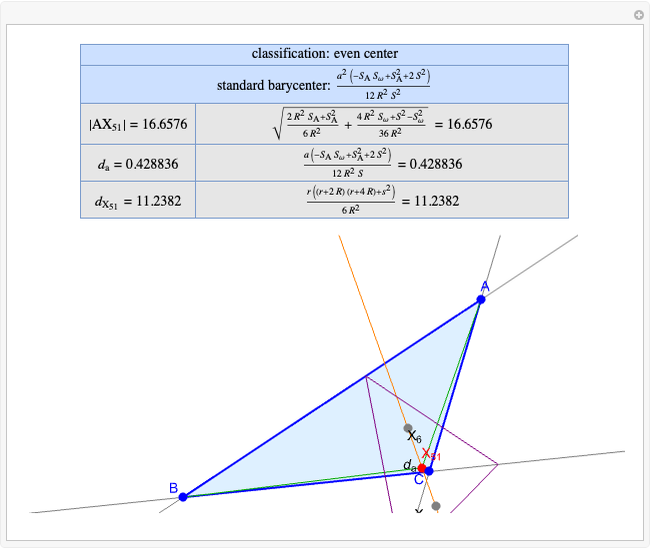Basic Parameters of the Kimberling Center X(62)

Requires a Wolfram Notebook System
Interact on desktop, mobile and cloud with the free Wolfram Player or other Wolfram Language products.
Given a triangle  , construct the three interior equilateral triangles on the sides of
, construct the three interior equilateral triangles on the sides of  with centers
with centers  ,
,  ,
,  . Then the lines
. Then the lines  ,
,  ,
,  intersect at the second Napoleon point
intersect at the second Napoleon point  (see related links).
(see related links).
Contributed by: Minh Trinh Xuan (August 25)
Open content licensed under CC BY-NC-SA
Details
A triangle center is said to be even when its barycentric coordinates can be expressed as a function of three variables  ,
,  ,
,  that all occur with even exponents. If the center of a triangle has constant barycentric coordinates, it is called a neutral center (the centroid
that all occur with even exponents. If the center of a triangle has constant barycentric coordinates, it is called a neutral center (the centroid  is the only neutral center). A triangle center is said to be odd if it is neither even nor neutral.
is the only neutral center). A triangle center is said to be odd if it is neither even nor neutral.
Standard barycentric coordinates of a point with respect to a reference triangle have a sum of 1.
Reference
[1] C. Kimberling. "Encyclopedia of Triangle Centers." (Jul 20, 2023) faculty.evansville.edu/ck6/encyclopedia.
Snapshots
Permanent Citation



































